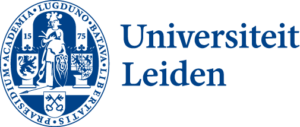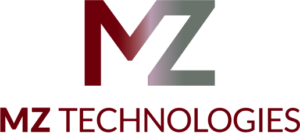The NimbleAI consortium partners and industry advisors cover the entire semiconductor value chain to ensure the resulting IP is manufacturable, usable and relevant to industry.
Please reach out if you want to become an industry advisor for the NimbleAI project.
Research organisations
IKERLAN is a leading centre in technology transfer to provide competitive value to industry. It offers integral solutions combining different technological domains in three main areas: Electronics, Information and Communication Technologies (EICT), Energy and Mechatronics. The centre’s team is currently made up of 400 people. It is a member of the MONDRAGON Corporation and the Basque Research and Technology Alliance (BRTA).
IKERLAN is the coordinator of the NimbleAI project. Their team will investigate efficient hardware implementations of event-driven light-field algorithms for monocular depth perception. IKERLAN will also explore techniques to transform DVS visual events into GML neural events to complete an end-to-end event-driven inference pipeline, and efficiently implement such processes in hardware. Finally, IKERLAN will design a prototyping platform to showcase the NimbleAI architecture including these modules.
Barcelona Supercomputing Center, established in 2005, serves as the National Supercomputing Facility in Spain. The mission of the BSC is to research, develop and manage information technologies in order to facilitate scientific progress. The work in NimbleAI is carried out by the Computer Architecture Operating System Interface (CAOS) group, which is part of the computer science department. The CAOS group, aims at bringing HPC technologies to safety and mission critical systems such as those in automotive, avionics, space, and robotics among others.
BSC is in charge of integrating and tailoring a multicore interference-aware statistics unit (SafeSU) to provide observability and controllability means for real-time performance, as well as developing and integrating a tiny controller (TinyCo) orchestrating data delivery and optimizing the processing in the NimbleAI 3D SoC.
Since its foundation in 1815, Vienna Technical University (TU Vienna) has been actively pursuing its motto “Technology for people” (“Technik für Menschen”) in a wide range of academic fields. With its focus on engineering, computer science and natural sciences it has been a partner for innovation and innovation-oriented enterprises for over 200 years. The Cyber-Physical-Systems research group (CPS), which is working in NimbleAI, actively researches specification, design, analysis and control of cyber-physical systems. In the last few years, the group has expanded its control research into the realm of neural networks.
TU Vienna will contribute an abstract model of (human) attention and look into use cases of the end product, especially in their current research use cases. The requirements found will be used together with other use case partners to build a set of specifications for the end product.
imec is a world-leading research and innovation centre in nanoelectronics and digital technologies. Imec leverages its state-of-the-art R&D infrastructure and its team of more than 5,000 employees and top researchers, for R&D in advanced semiconductor and system scaling, silicon photonics, artificial intelligence, beyond 5G communications and sensing technologies, and in application domains such as health and life sciences, mobility, industry 4.0, agrofood, smart cities, sustainable energy, education, etc. Headquartered in Leuven (Belgium), Imec unites world-industry leaders across the semiconductor value chain, Flanders-based and international tech, pharma, medical and ICT companies, start-ups, and academia and knowledge centres.
imec is working on 3D integration technologies and design of ICs, which will contribute to the NimbleAI work about 3D stacked silicon integration. In particular, imec will work on 3D interconnect models for early floorplanning and assessment of 3D architecture, and design of advanced ASICs for 3D stacking including SNN engines.
The Leiden Institute of Advanced Computer Science (LIACS) at Leiden University (UL) is a centre of excellence for multidisciplinary research and education in computer science, focused on several research fields including Systems and Security as well as Artificial Intelligence and Machine Learning. The LIACS mission is to improve current computer science methods, systems and techniques, whilst exploring new research areas that are relevant to society.
LIACS at Leiden University will apply its expertise in hardware security and embedded systems design to devise mechanisms that ensure secure remote upgrades of the envisioned NimbleAI endpoint devices. To this end, LIACS will research and develop low-power and low-latency authentication and decryption mechanisms to communicate configuration data used for the device upgrades as well as mechanisms to detect malicious mappings in the configuration data.
Politecnico di Milano (POLIMI) is the leading technical university in Italy. According to the QS World University Rankings for subject area ‘Engineering & Technology’, it ranked in 2020 as the 20th best in the world. POLIMI is currently host institution for more than 24 ERC projects, and more than 60 spinoffs/startups in the incubator Polihub. The Department of Electrical Engineering, Computer Science and Bioengineering (DEIB) will take part in NimbleAI. Contributions to this project will be provided by the Nanodevice group which has more than 20 years of experience in the field of semiconductor emerging devices.
POLIMI will contribute the design of nonvolatile memory and advanced security primitives based on emerging memory technologies, such as embedded RRAM. The PUF will serve for cryptographic key generation and chip authentication and will rely on the stochastic state and switching of RRAM as entropy source to enable secure IoT systems.
The University of Manchester (UoM) is one of the top research-led universities. The UoM is ranked 38th in the world and 8th in EU in the 2022 Academic Ranking of World Universities, and 9th in the world in the Times Higher Education University Impact Rankings. The research staff working on NimbleAI are members of the Advanced Processor Technology group within the Computer Science Dept. This is one of the few Arm “Centres of Excellence” able to design complex Silicon as demonstrated by SpiNNaker; a one million Arm core, massively parallel Spiking Neural Net (SNN) architecture.
UoM brings SNN expertise and silicon implementation knowledge to research and develop neuromorphic architectures that will communicate directly with the event-driven DVS, filtering noise and delimiting regions of interest. This will help limit the downstream processing required, reducing overall energy requirements whilst regulating the DVS events to find the optimal energy efficiency and accuracy trade-off.
CSIC is the largest research organization in Spain. It is a public body with 13,000 employees and 124 research institutes. CSIC participates with the “Instituto de Microelectrónica de Sevilla” (IMSE), devoted to research in microelectronic circuit design. The participating team is the “Neuromorphic Group”, an analogue and mixed-signal design group with about 30 years of experience in neuromorphic systems, holding nine patents and co-founder of two spin-off companies related to neuromorphic engineering systems.
IMSE will develop a new version of a Dynamic Vision Sensor (DVS) with electronic foveation capability to improve overall system energy consumption by efficient data reduction. Additionally, 3D monocular vision will be explored.
Universitat Politècnica de València (UPV) is a public university with four campus sites, over 35,000 students and 2,600 faculty members and research staff. With 44 Departments, most of them in engineering areas, it is the top University in Spain regarding patent production. Contributions to this project will come from the Parallel Architectures (GAP) group of the UPV. GAP has a 26-year research expertise in different aspects of system architecture, especially on interconnection networks. The GAP group members have led research projects focused on processor designs, architetural explorations, FPGAs and on-chip interconnects, providing also virtualization and partitioning support in embedded multicore systems.
UPV has already developed an interconnect and manycore exploration infrastructure that enables the design and exploration of multi-IP architectures. In the context of NimbleAI, UPV is in charge of the design of the on-chip interconnect and leads the architectural integration of the 3D stacked NimbleAI chip.
The French Alternative Energies and Atomic Energy Commission (CEA) is a key player in research, development and innovation in several main areas, including: defence and security, low-carbon energies (nuclear and renewable energies), technological research for industry, fundamental research in the physical sciences and life sciences. It has 9 research centres and 21,148 employees. In NimbleAI, CEA participates with CEA-List (smart digital systems) and CEA-Leti (micro and nanotechnologies) Institutes of the Technology Research Division.
CEA-List will develop a new programming model for a specialized processing that couples in-memory computing and programmable logic (eFPGA). CEA-Leti is involved in the development of embedded resistive memories (RRAM) memory and Physically Unclonable Functions (PUFs).
The Bee Sensory and Behavioural Ecology Lab led by Professor Lars Chittka at Queen Mary University of London is renowned for its pioneering research in the field of bee sensory and behavioural ecology. The lab focuses on understanding the cognitive and neural mechanisms underlying the perception, learning, memory and decision-making processes of bees, and how these abilities are shaped by the bees’ ecological and social contexts. One of the lab’s key research strengths is its use of cutting-edge techniques such as radar flight tracking, high-speed videography, and virtual reality simulations to study the neural mechanisms underlying bee behaviour.
Chittka’s team will provide the biological aspects of insect vision to NimbleAI. Insect brains are renowned for their highly energy efficient computing while at the same time generating advanced cognition, navigation and information storage and retrieval. Chittka’s group seeks to leverage the principles of insect information processing for energy-efficient computing by providing empirical work and computational neuroscience to NimbleAI.
Eindhoven University of Technology (TU/e) is a world-leading research university specializing in engineering science & technology. The Department of Electrical Engineering is responsible for research and education in Electrical Engineering. The discipline covers technologies and electrical phenomena involved in computer engineering, information processing, energy transfer and telecommunication. The department strives for societal relevance through an emphasis on the fields of smart sustainable systems, the connected world and care & cure. The TU/e is the world’s best-performing research university in terms of research cooperation with industry (#1 since 2009).
TU/e is coordinating the CONVOLVE project (https://convolve.eu), which was funded in the same Horizon Europe call as NimbleAI and pursues similar technical objectives. Both projects are collaborating to enhance their respective results and carry out co-dissemination activities. This collaboration is formalised by means of cross-participation of their coordinators in the other project as an associated partner: IKERLAN in CONVOLVE and TU/e in NimbleAI.
Semiconductor IP companies
Menta SAS, based in Sophia-Antipolis, France, is a private semiconductor IP provider offering a ground-breaking performance accelerator for edge computing in the form of eFPGA IPs. Menta is the proven eFPGA pioneer whose design-adaptive standard cells-based architecture and state-of-the-art tool set provides the highest degree of design customization, best-in-class testability, and fastest time-to-volume for SoC design targeting any production node at any foundry. Menta products are used worldwide by companies serving the defense, space, IoT, AI, 5G and automotive markets.
Menta will deliver an eFPGA Soft IP within the Adaptable Processing Architecture of the NimbleAI project by implementing RISC-V ISA extensions for the C-SRAM tiles and the CCDM modules. Menta’s Origami tool will be updated to infer the CCDM modules, map the Application’s RTL functionalities to them, and extend the RISC-V CPU. Menta will also lead the activities to ensure the communication and dissemination of the results of the project, generate intellectual and industrial protection of the produced knowledge, and prepare its exploitation after the end of the project.
Codasip delivers leading-edge RISC-V processor IP and high-level processor design tools, providing IC designers with all the advantages of the RISC-V open ISA, along with the unique ability to customize the processor IP. As a founding member of RISC-V International and a long-term supplier of LLVM and GNU-based processor solutions, Codasip is committed to open standards for embedded and application processors. Codasip Labs is the company’s dedicated innovation hub that aims to strengthen and accelerate the development of RISC-V processor customization to help its customers lead the way with unique technology.
Codasip will introduce application-specific RISC-V ISA extensions and adopt a software stack to efficiently interface with advanced out-of-core computing technologies such as compute-in-memory modules and custom soft cores running on an eFPGA.
EDA companies
MZ Technologies is the marketing function of Monozukuri S.p.A. Monozukuri’s mission is to conquer 2.5D & 3D design challenges for next generation electronic products by delivering innovative, ground-breaking EDA software solutions and methodologies. The technology redefines the co-design of heterogeneous microelectronic systems by providing an improved level of automation in three-dimensional interconnect optimization.
MZ brings the first European EDA software tool and solutions for the 3D design space. MZ will support 3D physical design feasibility studies, such as architecture exploration and system interconnect optimization, and will develop new functionalities related to timing/power/thermal analysis to demonstrate physical manufacturability of the target 3D stacked silicon implementations for NimbleAI use cases.
OEMs and end users
Raytrix is pioneering the development of high-resolution light-field vision systems. Light-fields capture 2D texture and 3D depth in a single image from a single camera through a single lens. Raytrix’s interdisciplinary team is building and innovating on this 3D imaging concept, transforming light-field systems into high-speed, high-resolution tools for a wide range of applications in optical inspection, biomedical imaging, and robotics.
Raytrix will explore reducing the computational burden of light-field vision by adapting bioinspired algorithms, acquisition and processing hardware. Most importantly, light field vision is being adapted for DVS sensors ¬-which transmit changes in the scene as events rather than traditional images or frames. These technologies are combined to create a DVS sensor with 3D perception for driver assistance.
Snap is a technology company, which contributes to human progress by empowering people to express themselves, live in the moment, learn about the world, and have fun together. Snap accomplishes this through development of augmented reality products that overlay virtual objects onto the world around you and allow you to capture those moments to seamlessly share with family and friends. Snap believes that this presents the greatest opportunity to improve the way we live and communicate.
Snap provides usages and technologies for advanced sensing and image processing. In the context of the project, Snap will work together with other partners on further optimizing these sensing and image processing technologies. These optimizations will include dynamic voltage and frequency scaling, virtualizing very large neural networks, stacked memory architectures, etc.
AVL List GmbH is one of the world’s leading mobility technology companies for development, simulation and testing in the automotive industry, and in other sectors. The company provides concepts, solutions and methodologies for a greener, safer and better world of mobility. With 10,700 employees at more than 90 locations and with 45 Tech and Engineering Centers worldwide, AVL’s offerings range from simulation, virtualization and test automation for product development to ADAS/AD and vehicle software. The company combines state-of-the-art and highly scalable IT, software and technology solutions with its application know-how, thereby offering customers extensive tools in areas such as Big Data, Artificial Intelligence, Cybersecurity or Embedded Systems design, verification and validation.
AVL will develop the Smart Monitors use case and demonstrator for highly automated vehicles in the automotive domain. Smart Monitors will be used in vehicle development, verification, and validation. In addition, AVL takes the role of functional safety (FUSA) manager to educate and advise the consortium to translate functional safety aspects from system view to the components envisioned in the project.
Viewpointsystem GmbH combines pioneering technology development with scientific expertise in vision research. The Vienna-based deep-tech company develops and produces internationally awarded smart glasses based on eye tracking. The smart glasses are used by B2B customers worldwide for remote support and maintenance, for training and documentation, as well as for research and analysis, among other things. As the inventor of Eye Hyper-Tracking and pioneer of Digital Iris technology, Viewpointsystem’s goal is to deepen the interaction between people and the digital world and to make Mixed Reality more intuitive.
Viewpointsystem develops the eye tracking use case, investigating the effect and advantages of NimbleAI’s system architecture and event-based processing on eye tracking algorithms. The goal is to explore the potential of this technology to develop an efficient and independent eye tracking module that is less dependent on external computing power and can be integrated into other devices that benefit from eye tracking data, such as smart glasses, XR headsets and many other systems.
ULMA Medical Technologies (UMT) is a Spanish healthcare company that belongs to the ULMA Group, one of the largest business groups in northern Spain, with more than 60 years of experience in the market and over 5.500 employees all over the world. UMT’s ambition is to provide intelligence to medical devices that are currently available in the hospitals in order to automate and optimize prevention, diagnosis and follow-up processes of several diseases. Currently, the comprehensive solutions compounded by AI models, digital health platforms and medical devices are deployed in two medical specialties: Ophthalmology and Dermatology.
UMT will port and deploy its AI model for the early detection of Diabetic Retinopathy (DR) in the prototype of the NimbleAI chip.

























